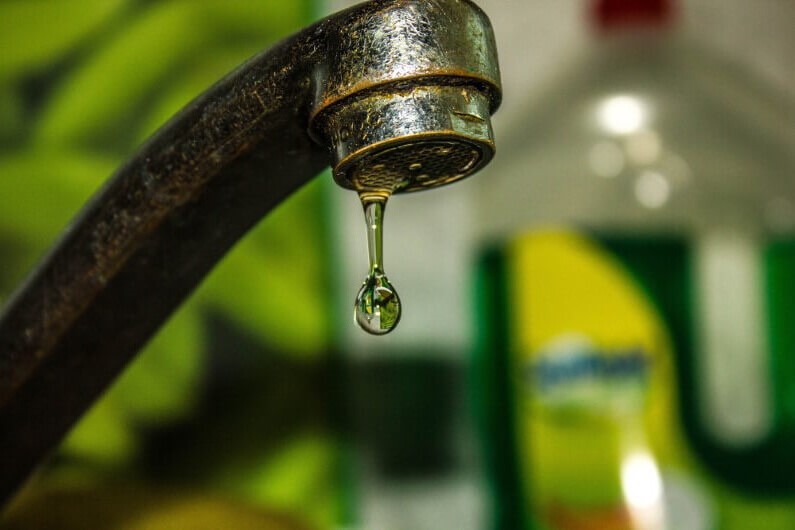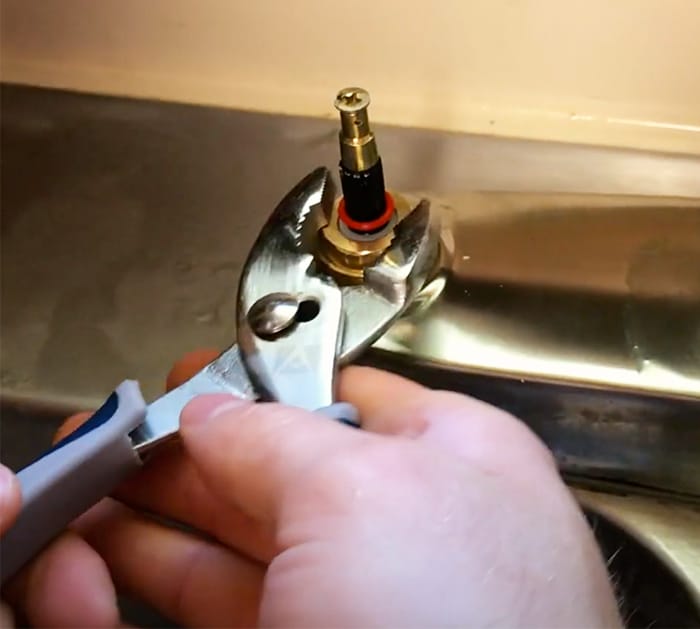What It's Vital to Fix a Broken Faucet
What It's Vital to Fix a Broken Faucet
Blog Article
Everyone has got their private rationale with regards to 4 Common Reasons for a Leaky Faucet.

Leaking taps may look like a small trouble, however their influence goes beyond simply the aggravation of the audio. From drainage to sustaining unnecessary monetary expenses and wellness risks, disregarding a trickling faucet can bring about various consequences. In this short article, we'll explore why it's vital to resolve this usual house problem immediately and successfully.
Wastefulness of Water
Environmental Effect
Dripping faucets contribute dramatically to water wastage. According to the Epa (EPA), a single tap trickling at one drip per secondly can squander more than 3,000 gallons of water per year. This not just pressures water sources however additionally affects environments and wild animals depending on them.
Step-by-Step Overview to Fixing a Dripping Faucet
Devices Called for
Prior to trying to deal with a trickling tap, collect the needed devices, including an adjustable wrench, screwdrivers, replacement components (such as washing machines or cartridges), and plumber's tape.
Typical Tap Issues and Their Solutions
Recognize the type of faucet and the details problem causing the drip. Usual troubles include damaged washers, rusty shutoff seats, or faulty O-rings. Refer to producer directions or on-line tutorials for detailed advice on repairs.
Financial Costs
Raised Water Bills
Beyond the environmental effect, trickling faucets can blow up water bills considerably. The built up wastefulness gradually translates into greater energy expenses, which could have been prevented with prompt repair work.
Prospective Home Damages
In addition, prolonged dripping can result in harm to components and surface areas bordering the tap. Water buildup can create discoloration, deterioration, and also architectural problems if left ignored, leading to extra repair work expenses.
Wellness Worries
Mold And Mildew and Mildew Growth
The consistent visibility of wetness from a dripping tap produces a suitable environment for mold and mold growth. These fungis not only endanger indoor air high quality but likewise pose health and wellness threats, especially for people with respiratory system conditions or allergic reactions.
Waterborne Diseases
Stagnant water in trickling taps can become a breeding ground for germs and various other virus, increasing the risk of waterborne illness. Pollutants such as Legionella germs thrive in stagnant water, potentially leading to major diseases when ingested or inhaled.
DIY vs. Professional Fixing
Pros and Cons of DIY Fixing
While some might attempt to repair a dripping faucet themselves, do it yourself fixings include their own set of obstacles. Without proper understanding and tools, DIY efforts can exacerbate the issue or cause insufficient repairs, extending the trouble.
Benefits of Hiring an Expert Plumber
Hiring a specialist plumber makes certain that the underlying source of the leaking faucet is addressed effectively. Plumbing professionals possess the experience and equipment to detect and repair tap concerns effectively, conserving time and minimizing the danger of more damage.
Ecological Responsibility
Private Payment to Conservation
Taking obligation for dealing with dripping faucets lines up with more comprehensive efforts toward water conservation and environmental sustainability. Every person's actions collectively make a considerable effect on protecting priceless sources.
Lasting Living Practices
By focusing on punctual fixings and adopting water-saving habits, people add to sustainable living methods that benefit both present and future generations.
Safety nets
Normal Upkeep Tips
To stop trickling faucets, execute regular maintenance such as cleaning aerators, evaluating for leakages, and changing worn-out components without delay. Furthermore, think about setting up water-saving devices or updating to more efficient fixtures.
Value of Prompt Repair Works
Dealing with leaking faucets as soon as they're seen stops further water wastage and prospective damages, eventually conserving both water and cash in the future.
Influence On Property Value
Assumption of Well-Maintained Residential Or Commercial Property
Maintaining a home in good condition, including addressing upkeep problems like dripping faucets, boosts its perceived worth and charm amongst prospective buyers or renters.
Impact on Resale Value
Features with well-maintained plumbing fixtures, including faucets, command greater resale worths in the realty market. Addressing trickling faucets can contribute to a favorable impression throughout home inspections and settlements.
Verdict
Addressing a dripping faucet exceeds plain convenience; it's a vital action towards preserving water, reducing financial costs, and protecting health and wellness and residential property. Whether via do it yourself fixings or specialist help, doing something about it to take care of dripping taps is a tiny yet impactful method to promote responsible stewardship of sources and add to a healthier, more lasting future.
Why Are My Faucets Dripping (And Can I Fix it Myself)?
Causes of a Dripping or Leaking Faucet
Whether you’re hearing drops of water falling and hitting a sink, or noticing water ooze out from the base of the spout, you shouldn’t ignore a dripping or leaking faucet. And, the good news is, sometimes you can fix the problem yourself.
In this article, we’ll review a few common causes of dripping and leaky. We’ll also walk you through some basic ways to find the problem and handle it without calling anyone — and let you know when to call in a pro.
But, no matter what the cause, or whether you can handle it on your own, the sooner you address it, the better.
Each drip may be a tiny amount of water. But, they all add up quickly. According to the U.S. Geological Survey, one faucet losing one drop every 20 seconds — five a minute — wastes around a liter of water every day, and 173 gallons a year.
Add in more than one in your house, and it’s a lot of water to waste. So, we’ll help you get to the bottom of things quickly.
Four Reasons Your Faucet May Be Dripping
Aerator is Damaged or Unseated Valve Seat is Corroded O Ring is Loose or Worn Out Part of the Assembly is Loose Aerator is Damaged or Unseated
If you unscrew the end of your faucet, you’ll find the aerator. It’s the little stem piece with a screen on it that shuts off the water circulation.
If it’s damaged, or if it’s not sitting right, it will allow water to pass through.
Valve Seat is Corroded
Next is the valve seat, which is connected to the washer. If the washer wasn’t in place correctly, then it could have ground against the seat. Over time, this damages the valve seat.
The problem could also be corrosion: Over time, the part has worn out, and it’s now allowing water to pass through.
O Ring is Loose or Worn Out
Since the o ring is only a small rubber gasket, it’s a common reason why the faucet is dripping. You’ll find it at the base of the faucet, and it’s there to keep water from coming out where it’s not supposed to.
However, it’s common for the o ring to wear out over time. When it does, you’ll notice a drip.
Part of the Assembly is Loose
So far, we’ve looked at a few small, specific parts. But, the problem could be anywhere in the assembly if something’s out of place.
Even if a part isn’t damaged, over time, it may have become loose or dislodged. It could be the parts we mentioned, or the aerator at the tip of the faucet, the stem itself,
Can I Fix a Leaky Faucet Myself?
Depending on the problem, and how handy you are, there’s a chance you can fix a leaky faucet without calling a professional. But, you do run the risk of making the problem worse.
If it’s a small drip, you can certainly try a few troubleshooting tactics. We’ll walk you through them in a moment.
But, no matter what, your first step should be shutting off the water coming into the faucet. You should find a shutoff valve under the sink on the pipes leading to it. Turn each one clockwise until they close tightly.
Next, make sure you have the right tools for whatever you’re attempting. It’s tempting to make do with what you have. But, you need the right ones for a reason: You’re often dealing with small parts that can break if you handle them carelessly.
If you’re feeling confident, here are some places to start.
Items Near the Tip of the Faucet
A few of the parts we mentioned — particularly the valve seat and washer — are located at the tip of the faucet where the water comes out. They’re easy to access, making it a good place to start.
Check the O Ring
To check the o ring, you’ll need to take off the spout at the base. It’s easiest on kitchen sinks with long spouts, versus the smaller, bulkier base on most bathroom sinks.
Either way, this can be tricky, so do it carefully and don’t force anything. If it’s not coming right off, you’re much better off calling in a pro than possibly breaking something.
For a kitchen sink, there’s usually a nut or coupling assembly at the base of the spout. These often slide off easily without using any tools.
Once you’ve disassembled those parts, gently but forcefully twist off the spout.
Then, you can see the o rings. There should be two of the rubber gaskets on the base. If they look worn or damaged, replace them, and see if that solves the problem.

I'm very inquisitive about and I am hoping you enjoyed reading the new blog posting. Sharing is good. One never knows, you might be doing someone a favor. I praise you for being here. Come back soon.
Report this page